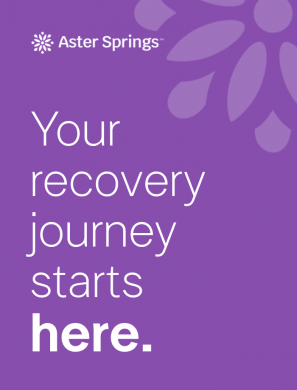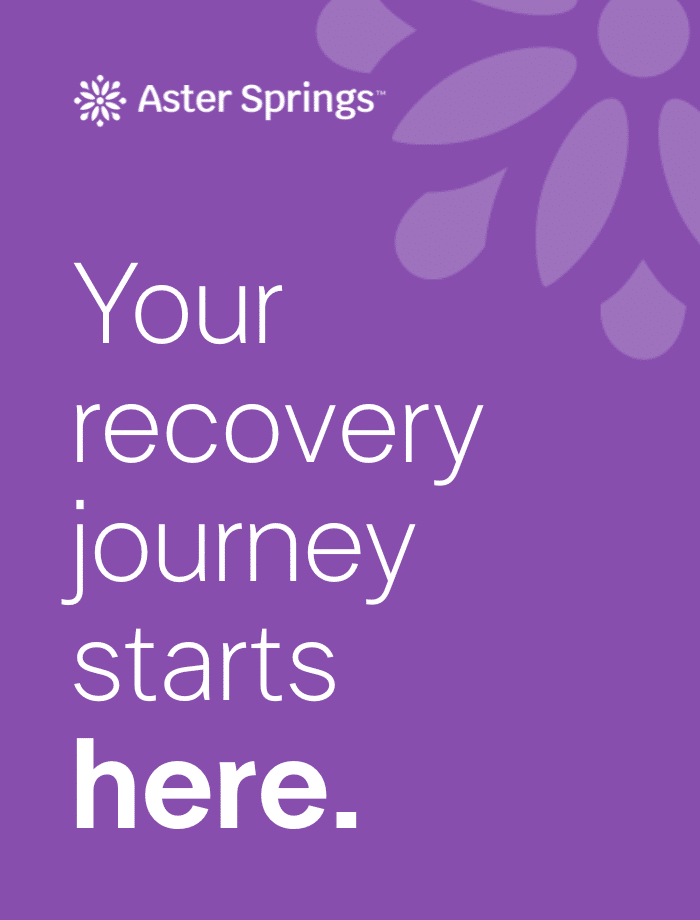When most people hear the word anorexia, a very specific image might come to mind: someone extremely thin, fragile-looking, or visibly undernourished. But eating disorders don’t always fit the visual stereotypes we associate with them.
Some individuals live with the same emotional pain and physical toll seen in anorexia nervosa: intense fear of gaining weight, an exhausting preoccupation with food and body image, and a painful gap between how they see themselves and how they truly are. Their bodies may be under immense strain, with complications like heart irregularities, hormonal changes, and nutritional deficiencies. Yet, from the outside, they appear to be at a “normal” or even higher weight range.
This is atypical anorexia, and while the name may imply otherwise, it is just as serious, dangerous, and life-altering as typical anorexia — and it deserves the same urgency, compassion, and access to care.
What is Atypical Anorexia?
According to the DSM-5 — the main reference doctors and mental health professionals use to diagnose mental health conditions — atypical anorexia falls under a category called Other Specified Feeding or Eating Disorders (OSFED). In this condition, an individual meets all the diagnostic criteria for anorexia nervosa, such as restricting food intake, experiencing intense fear of weight gain, and having a distorted body image. The key difference is that, even after significant weight loss, their body weight remains in what’s considered a normal or above-normal range (APA, 2013).
Research examining large population samples found that atypical anorexia nervosa occurs just as often — and in some cases even more often — than classic or typical anorexia nervosa.
Harrop et al. 2021, International Journal of Eating Disorders
The word “atypical” can be unintentionally misleading, making this disorder seem less serious than it really is. In reality, “atypical” doesn’t mean the condition is rare or that the symptoms are unusual. It simply means the diagnosis doesn’t match every detail of what’s seen in “typical” anorexia nervosa.
Individuals of any body size, race, gender, or background can experience this disorder — and many do. Sadly, because it doesn’t fit the narrow stereotypes about what anorexia “looks” like, their struggles are often overlooked, misunderstood, or dismissed entirely.
Recognizing Atypical Anorexia Symptoms
Psychological + Behavioral Features
Individuals living with atypical anorexia often experience the very same emotional, mental, and behavioral challenges seen in classic anorexia nervosa. The difference lies only in body weight — not in the depth of distress or the potential health impact.
Common signs include:
Restricting food intake
to the point of causing significant weight loss — even if weight remains in what’s considered a “normal” or higher range.
Intense fear of gaining weight
or engaging in ongoing behaviors to prevent it, such as excessive exercise, rigid eating rules, or skipping meals.
Distorted body image
where self-worth is tied closely to body size or shape, or where perception of one’s own body is disconnected from reality.
Heightened anxiety around food + body
obsessive or compulsive patterns, persistent low self-esteem, depression, or other mental health concerns that often develop alongside the disorder.
These symptoms are not less severe just because someone’s body is perceived as “normal” or larger than normal. Internally, the mental and emotional strain is every bit as real and consuming.
Red Flags for Physical Health
Even without a visibly low body weight, atypical anorexia can cause serious — and sometimes life-threatening — medical complications, including:
Brachycardia (slowed heart rate)
Low blood pressure and orthostatic instability (feeling dizzy or fainting when standing).
Electrolyte imbalances
that can affect heart rhythm and muscle function.
Nutritional deficiencies
leading to fatigue, anemia, or slowed digestion.
Hormonal disruptions
such as missed menstrual cycles (amenorrhea), which can contribute to bone loss (osteopenia or osteoporosis) over time.
These risks mirror those in typical anorexia nervosa. In some cases, they may be equally or more dangerous because the signs can be overlooked until the body is already in distress.
Why Atypical Anorexia Often Goes Undiagnosed
Weight bias + stereotypes
Weight bias plays a major role in why atypical anorexia is so often missed, misunderstood, or even inadvertently reinforced — both in society and in healthcare settings.
Research has shown that healthcare providers are less likely to recognize eating disorders in clients in higher-weight bodies, even when those clients meet the same diagnostic criteria as someone with a lower BMI (Puhl & Heuer, 2009; Sim et al., 2013). This means individuals with atypical anorexia are more likely to go untreated for longer, which can worsen both medical complications and psychological distress.
These biases and misconceptions mean the behaviors and psychological distress that define atypical anorexia — extreme restriction, fear of weight gain, body image distortion — can go unnoticed for months or even years. During that time, the disorder can become more entrenched, medical risks can escalate, and the individual’s mental health can deteriorate.
The assumption that eating disorders can be spotted through body size alone means countless individuals don’t receive the validation, diagnosis, and care that could save their lives.
Stigma + shame
Stigma and shame keep many people with atypical anorexia from seeking treatment by making them doubt both the seriousness of their illness and their right to care.
Because eating disorders are so often stereotyped as conditions that only affect very thin people, those in average or higher-weight bodies may feel they don’t “look sick enough” to be taken seriously. This can create:
Self-doubt
They may believe their symptoms aren’t severe enough or that they should be able to “fix” the problem on their own.
Fear of being judged or dismissed
Many worry that if they open up to a doctor, therapist, or even a loved one, they’ll be told to “just keep losing weight” or that what they’re experiencing is normal.
Internalized stigma
Cultural forces that equate a person's thinness with their value can make it hard to admit that restrictive eating or excessive exercise is actually harmful.
Isolation
A lack of external feedback means harmful behaviors — like restricting, bingeing, purging, or compulsive exercise — can become more entrenched without challenge.
Over time, these barriers delay diagnosis and allow the disorder to progress, increasing both physical risks — like heart issues, hormonal changes, and bone loss — and emotional suffering. Ending this cycle requires dismantling stereotypes, normalizing conversations about disordered eating at every size, and making treatment spaces explicitly weight-inclusive.
Treatment Options + Support
Medical + Nutritional Rehabilitation
The first step is medical stabilization — carefully monitoring and addressing urgent health concerns such as heart irregularities, electrolyte imbalances, or hormonal issues. Clinicians also watch for refeeding syndrome, a potentially dangerous complication when nutrition is reintroduced too quickly.
From there, nutritional therapy is essential. This involves working with trained dietitians and healthcare providers to restore nourishment and repair the effects of malnutrition — regardless of an individual’s current weight.
Immersive Therapy + Mental Health Support
Therapy is a cornerstone of recovery. Evidence-based approaches like cognitive behavioral therapy (CBT), dialectical behavior therapy (DBT), and interpersonal therapy can help address disordered thoughts, rebuild a healthy relationship with food, and support emotional healing.
Treatment also addresses co-occurring mental health conditions — such as depression, anxiety, or obsessive-compulsive disorder (OCD) — that often accompany atypical anorexia. While medications like SSRIs may be used as part of a broader plan, they are most effective when combined with therapy and nutritional care.
Family + Community Support
For adolescents, family therapy — where caregivers are actively involved in supporting meals and recovery — has shown strong results. Regardless of age, healing is often supported by a weight-inclusive approach, where the focus is on overall health, nourishment, and emotional well-being — not numbers on a scale.
If you or someone you care about are struggling with eating concerns but don’t “look” like you have an eating disorder, please know this — your pain is real, your health matters, and you deserve help.
Atypical anorexia is a serious, potentially life-threatening disorder just like classic anorexia is. Recovery is possible, and with the right combination of medical care, nutritional support, and emotional healing, there is a path forward.
At Aster Springs, We See You
At Aster Springs, we offer specialized treatment for eating disorders and co-occurring conditions, including OSFED and atypical anorexia. With personalized therapy, clinical support, and a compassionate team by your side, healing is not only possible — it’s within your reach.
Contact us today to learn more about our treatment programs and take the first step toward a life free from the chains of disordered eating.
References
- American Psychiatric Association. (2013). Diagnostic and Statistical Manual of Mental Disorders (5th ed.). DSM‑5.
- Harrop, E., Mensinger, J. L., Moore, M., Lindhorst, T., & Becker, C. B. (2021). Restrictive eating disorders in higher weight persons: A systematic review of atypical anorexia nervosa prevalence and consecutive admission literature. Journal of Eating Disorders, 9(1), 78.
- Puhl, R. M., & Heuer, C. A. (2009). The stigma of obesity: A review and update. Obesity, 17(5), 941–964.
Sim, L. A., Lebow, J., & Billings, M. (2013). Eating disorders in adolescents with a history of obesity. Pediatrics, 132(6), e1026–e1030.



